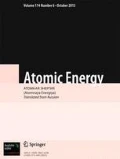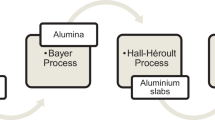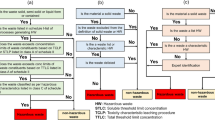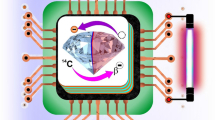The 14C emissions from NPP with RBMK-1000 and EGP-6 reactors as well as the yearly population irradiation dose due to these emissions are evaluated. A model is presented for calculating the population irradiation dose due to 14C emissions assuming an equilibrium 14C distribution between local food products and atmospheric air and absence of such an equilibrium for humans as a result of the consumption of imported food products. This model makes it possible to legitimately reduce the conservatism of the evaluation of the dose from standard NNP emissions as compared with the operating procedures and recommendations. The estimated population irradiation dose from 14C emissions is as follows, μSv/yr: 2.3 Smolensk, 1 Leningrad, 1.3 Kursk, and 0.034 Bilibino NPP. Irrespective of the computational model the 14C contribution in the total population irradiation dose due to emissions from NPP with RBMK-100 and EGP-6 reactors is significantly higher than 1%, so that it must be normalized and monitored.
Similar content being viewed by others
References
S. V. Panchenko, I. I. Linge, et al., Radioecological Conditions in the Vicinity of Rosatom Enterprises, I. I. Linge and I. I. Kryshev (eds.), SAM Poligrafi st, Moscow (2015).
Setting Authorized Limits for Radioactive Discharges: Practical Issues to Consider, IAEA-TECDOC-1638, IAEA, Vienna (2010).
E. I. Nazarov, A. A. Ekidin, and A. V. Vasil’ev, “Estimation of carbon-14 release into the atmosphere due to NPP emissions,” Izv. Vyssh. Uchebn. Zaved. Fiz., 61, No. 12–2 (732), 67–73 (2018).
A. A. Ekidin , M. V. Zhukovskii, and M. E. Vasyanovich, “Identifi cation of the main dose-generating radionuclides in nuclear emissions,” At. Energ., 120, No. 2, 106–108 (2016).
I. Ya. Vasilenko, V. A. Osipov, and V. P. Rublevskii, “Radioactive carbon,” Priroda, No. 12, 59–65 (1992).
V. B. Gaiko, N. A. Korablev, E. N. Solov’ev, et al.,14C Formation and Release at Nuclear Power Plants with RBMK Reactor, Preprint TsNIIatominform-OH-4 (1986).
V. P. Rublevskii, V. N. Yatsenko, and E. G. Chanyshev, The Carbon-14 Role in Technogenic Human Exposure, IzdAT, Moscow (2004).
P. Povinec, M. Chudy, A. Šivo, et al., “Forty years of atmospheric radiocarbon monitoring around Bohunice nuclear power plant, Slovakia,” J. Environ. Radioact., 100, 125–130 (2009).
A. Magnusson, K. Stenström, D. Adliene, et al., “Carbon-14 levels in the vicinity of the Lithuanian nuclear power plant Ignalina,” Nucl. Instrum. Meth. Phys. Res. B, 259, 530–535 (2007).
Methodology for the Development and Establishment of Standards for Maximum Permissible Emissions of Radioactive Substances into the Atmosphere, Rostekhnadzor, Moscow (2012).
Methodological Recommendations for Calculating the Standards for Maximum Permissible Emissions of Radioactive Substances from Organized Sources into the Air for Organizations of the State Atomic Energy Corporation Rosatom, No. 1-1/310-R, Rosatom, Moscow (2014).
RB-106-15, Safety Guidelines for the Use of Atomic Energy. Recommended Methods for Calculating the Parameters Necessary for the Development and Establishment of Standards for Maximum Permissible Emissions of Radioactive Substances into the Atmosphere, Rostekhnadzor, Moscow (2015).
MT 1.2.1.15.1176–2016, Development and Establishment of Standards for Maximum Permissible Emissions of Radioactive Substances from Nuclear Plants into the Atmosphere. Methodology, Concern Rosenergoatom, Moscow (2016).
Generic Models for Use in Assessing the Impact of Discharges of Radioactive Substances to the Environment, IAEA Saf. Rep. Ser. No. 19, IAEA, Vienna (2001).
“Compendium of Dose Coefficients Based on ICRP Publication 60. ICRP Publication 119,” Ann. ICRP, 41, No. 1, 1–130 (2012).
MU 2.6.5.010–2016, Substantiation of Boundaries and Operating Conditions of Sanitary Protection Zones and Observation Zones of Radiation Facilities: Methodical Instructions, FMBA Russia, Moscow (2016).
Carbon-14 and the Environment. IRSN Radionuclide Fact Sheet, Institut de Radioprotection et de Surete Nucleaire, France (2010).
M. E. Vasyanovich, A. A. Ekidin, A. V. Vasilyev, et al., “Determination of radionuclide composition of the Russian NPPs atmospheric releases and dose assessment to population,” J. Environ. Radioact., 208–209, No. 106006 (2019).
SanPiN 2.6.1.24-03, Sanitary Rules for the Design and Operation of Nuclear Plants, Moscow (2003).
Author information
Authors and Affiliations
Corresponding author
Additional information
Translated from Atomnaya Énergiya, Vol. 128, No. 1, pp. 46–52, January, 2020.
Rights and permissions
About this article
Cite this article
Kryshev, A.I., Kryshev, I.I., Vasyanovich, M.E. et al. Population Irradiation Dose Assessment for 14C Emissions from NPP with RBMK-1000 and EGP-2 Reactors. At Energy 128, 53–59 (2020). https://doi.org/10.1007/s10512-020-00650-2
Received:
Published:
Issue Date:
DOI: https://doi.org/10.1007/s10512-020-00650-2




